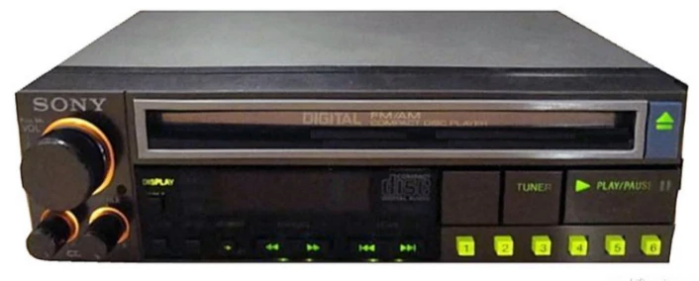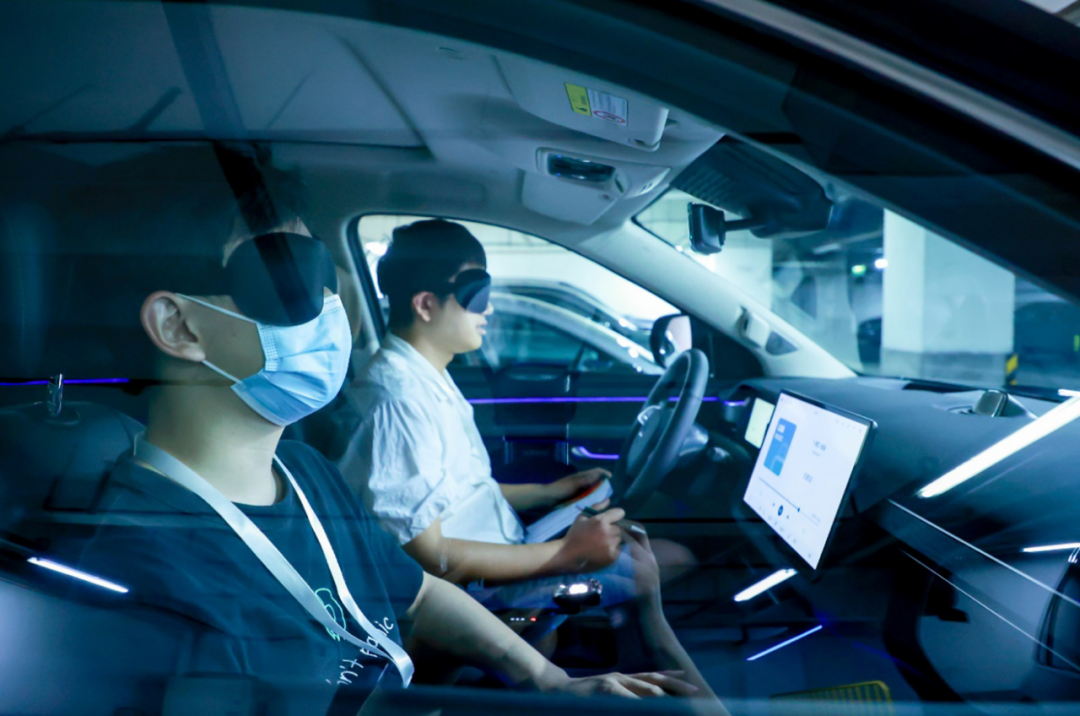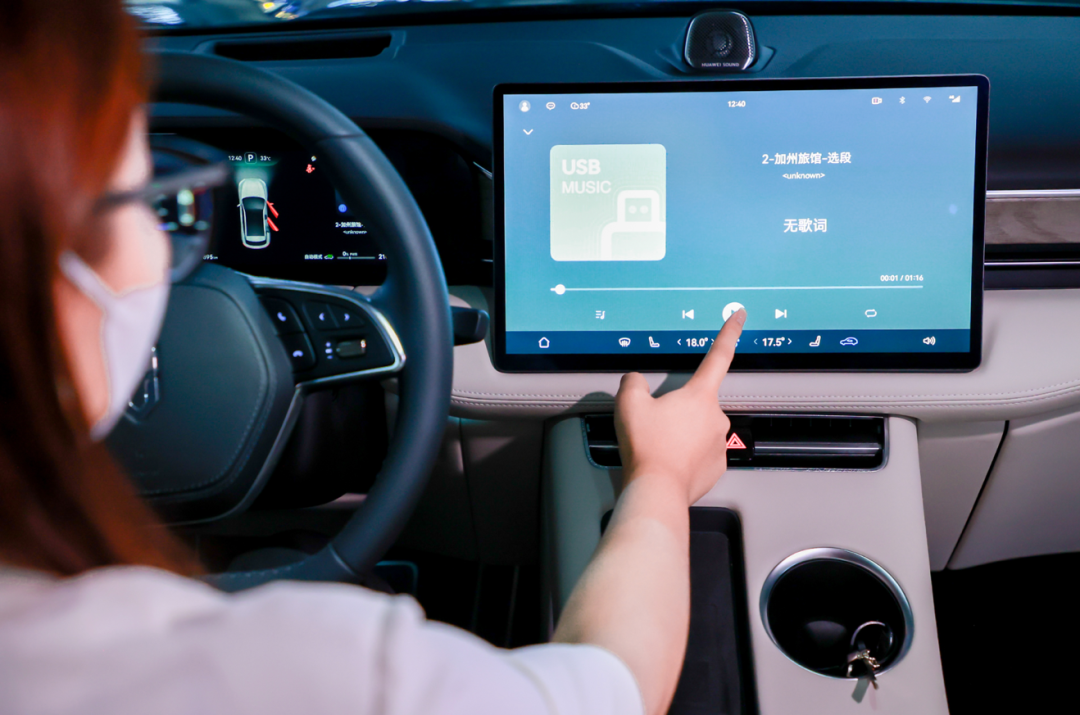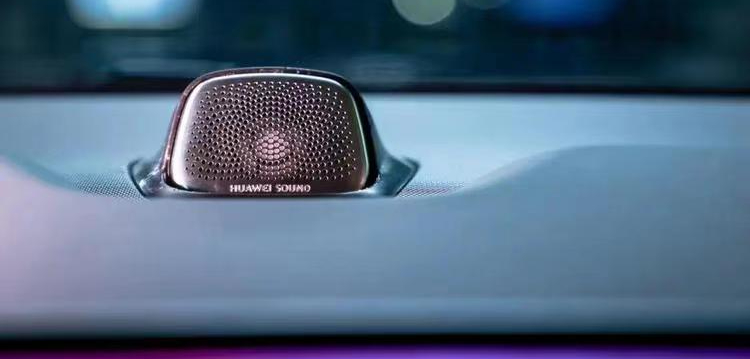The Beginning of the Car Audio Market in China
Let’s talk about how the car audio market in China started.
This kind of car hardware, which has become a norm and even a necessity compared to the central control screen, has been in contact with us for about 40 years – slowly catching up with the world through a large number of imported cars.
At that time, Chinese people had already skipped a series of pits, including in-car monaural FM radio, in-car vinyl record players, in-car cassette players, 4-track cassette players, 8-track cassette players, etc., and directly entered the era of box-shaped cassette tapes.
In addition, as the cassette recording machine was widely popularized in mainland China in the 1980s, regardless of whether people had cars or not, most people’s enlightenment of modern music was started by box-shaped cassette tapes, even though the first car model equipped with a factory-installed CD player appeared at the end of the 1980s.
Statistics show that from 1963 to 1988, the global sales of box-shaped cassette tapes exceeded 3 billion with ease.
Even as late as the early 21st century, an English company had already put MP3s into cars for several years, Napster allowed people around the world to experience the immoral pleasure of “pirated music,” and the car audio market both domestically and internationally was still in a state where AM/FM radios, cassette tapes, and CDs were all indispensable.
After reform and opening-up, the aftermarket of the car audio market naturally entered China in the 1980s. The most well-known player is Chen Tian, who is known throughout the Greater Bay Area, and can “assemble a car from scratch.”
It is also in this land that not only did American drift driver Ross find the car accessories he needed for competitions but also many Chinese drivers knew that their original car audio systems could be modified, with digital signal processing (DSP) technology and center speakers, allowing them to create a larger, more unique, and more powerful car audio system with a better sound field.
And there is the industry-recognized and greatest car audio host, the Sony CDX-7.

Numerous people learned from Sony that a complete audio tuner could be squeezed into a small in-car player, allowing car audio to play Hi-Fi or Hi-End proficiently. The car amplifier system has also evolved from built-in stereo units to independent multi-channel amplifiers. Speakers have also become more complex and interesting, with sizes ranging from small to large, making it convenient for engineers to fit them into any space inside the car.
So, where is the current level of the car audio market in China?
Don’t worry, it’s safe to guess high.According to an industry veteran in the car audio industry in China, the growth and maturity of most domestic brands in the development of speakers, amplifier production, and digital music players is the fastest in the world, and has even surpassed or is on par with the level of Chinese smart electric cars.
Many famous old audio brands/factories in Europe have benefited from the well-regulated and rapid development of China’s automotive audio industry. They have transformed into small workshops that only require a few people to tune the audio, living shamelessly, “opening for three years and eating for three years.”
In 2019, data showed that China accounted for more than 90% of the world’s OEM orders for automotive audio brands, any given task from an agent to a Chinese agent is already ranked first in the world, and any famous audio brand in the world can be found in China.
Perhaps this is why in recent years, mainstream domestic brands and new makers are crazily building car audio systems, even more so than large screens. Moreover, more and more brands are no longer obsessive with well-known foreign brands, and are starting to develop their own audio systems.
Thus, two major categories of domestic car audio systems have taken shape: branded audio systems and unbranded audio systems.
We’re all familiar with the former: Mercedes-Benz’s Burmester, BMW’s B&W Boway, Audi’s BOSE, Volkswagen’s Dynaudio, and Ford’s Sony…The unbranded audio systems are without brand logos, and the typical representatives are Shangsheng Electronics, Purim, and others. Apart from the lack of branding, they can provide comprehensive product support for some brands, such as NIO ET5 and ET7, Ideal L9, and so on.
The reason for their self-developed audio systems is actually straightforward: overseas big brands often offer fixed bundled audio systems that do not provide much choice and cannot be redesigned according to intelligent cabins. Self-developed car audio systems can provide more independence. For example, they can customize individual designs and tune the audio according to the cabin to determine speaker mono sound quality, quantity, NVH performance, and interior materials to achieve the desired audio quality. In short, as long as there is sufficient computing power, an intelligent cabin can create a more suitable, stunning, and highly personalized listening experience.
Another reason is more important, and that is cost savings. Compared to genuine big brands that only tune audio and paste big brands, there are obviously far too many unbranded audio systems. They can handle both speakers and amplifiers, with cheap prices and high quantity, and can even create their software or even allow top tuning engineers to become colleagues, which saves them twice the money. They can quickly become standard equipment and save triple the money.
These insights are from Li Xiang’s 2022 “Talking Nonsense” new series.It’s no wonder that several new mid-to-high-end models launched by emerging players in the industry this year have all forsaken foreign top-notch audio brands. For instance, the ET7 from NIO and the L9 from Li Auto, the former being equipped with 23 speakers from Suzhou Shangsheng and featuring 7.1.4 Dolby panoramic sound while the latter, with an unknown hardware origin but boasting 21 speakers, recruited experts formerly serving as judges in the International Auto Sound Challenge Association (IASCA) as employees to create 7.3.4 Dolby panoramic 3D sound.
In fact, there is a rarer type of new model that adopts audio brands self-developed by tech giants. For example, the AITO WENJIE series.
The most obvious advantage of this type lies in its endorsement by Huawei Audio Team, which has its own independent audio brand HUAWEI SOUND. Its six audio R&D centers and more than 300 audio engineers are currently the pivotal factor in the automotive audio industry of AITO.
Last Thursday, Huawei held an audio innovation technology communication meeting and opened its largest and most functional Shanghai audio laboratory with the following labs focusing on developing and verifying devices such as headphones, smartphones, and speakers: variable reverb acoustic laboratory, spatial audio laboratory, and hardware innovation laboratory. There is also an automotive scenario laboratory, which simulates various scenes and road conditions to adjust and verify the car audio accordingly, which is particularly authentic-looking.
The reason Huawei is so “Old Beijing” is simple: facing the constant gushing of new energy vehicles and the increasingly stagnant novelty of users, it must utilize new scenarios, develop new methods, find user pain points, layout new racecourses, and dig deeper into the psychological depths of new energy vehicle owners in order to elevate user perception again with a set of precise combinations, and ignite a deep ecological response in the automotive audio industry.
In plain terms: playing by the rules of the new energy industry in China will inevitably lead to short-term gain but long-term loss. Somehow, some stimulating and interesting elements must be introduced to awaken more excitement continuously. The competitiveness will remain on track. Therefore, the recently registered patent trademark HUAWEI SOUND in 2020 has been implanted in AITO M5 and AITO M7.
This integration has brought soul-searching to today’s automotive audio market.
What is a truly excellent car audio system? It does not depend on how many speakers or how famous the brand name is but rather on the key factor determining the ceiling of the car audio system — acoustic design.
As is well known, Huawei has a considerable number of acoustic experts, including a group of old friends in France – D & B Audiotechnik holding SAM and 3-frequency audio technology.SAM stands for SAM Dynamic Speaker Matching Technology, a technology that uses algorithms to compensate for different speaker properties, automatically correcting the output audio to enable better amplifier driving and taming of the speakers.
Three-way frequency division is a sound technology that has more midrange than two-way frequency division, making sound transitions smoother and more gentle. The challenge is to use active frequency division technology to split the audio signal into three channels, providing high, mid, and low frequency speakers, ensuring that each speaker is correctly positioned and able to play to its full potential.
The two knives of Devialet are complementary and indispensable.
In summary, although modern music is digitized, the pick-up and reproduction of sound remains within the realm of physics, and thus requires acoustic experts to design system architecture, acoustic pre-structuring and signal processing.
In addition, acoustic experts must also oversee the entire process of tuning the audio in the vehicle, creating audio components, and assembly. They must cooperate with software and hardware audio algorithm experts to achieve the best performance with intelligent car audio.
With excellent acoustic design, active frequency division, sound distribution, spatial calibration, distortion control and dynamic optimization can be performed according to the different seating arrangements and cabin environment, successfully showcasing the multiple tones and spatial atmosphere of music works in narrow car compartments, and tuning them to perfection.
According to blind tests, we found that there is considerable difference in the performance of HUAWEI SOUND in the M5 and M7 cars, possessing extremely distinct personality traits. For example, the M5 leans more towards Hi-End, while the Hi-Fi characteristics of the M7 are more evident.
Although they are both 19-unit professional audio (15 in the car body + 4 in the headrest), perfectly supporting the output of 1000W amplifier, the M5’s vocals sound rich and atmospheric, like drinking coffee, while the M7 more accurately reproduces the tone and spatial atmosphere of music works, which restores audio work details to perfection, like drinking tea.
Different presentations from the same HUAWEI SOUND are truly surprising.
It seems that Huawei has grasped the pulse of audio evaluation, namely that there is not only one standard, but that it varies from person to person. There is no absolute best audio, only the most suitable. For example, some people are indifferent to sound quality, while others prefer a richer Hi-End, and still others pursue the most authentic Hi-Fi…
At the end of the day, it’s still just plain language: the sound that suits you best is the most pleasant to listen to.
 And unlike other new forces in the automotive industry, or rather my advantage lies in HarmonyOS, Huawei’s exclusive “Space Audio” app in the world of questions, which is far beyond the reach of most automakers. After all, for many audiophiles, good sound is still not good when the source is bad, no matter how many speaker channels you have beyond 7.2. It can really make people feel uncomfortable and dig out a family theater set with their feet.
And unlike other new forces in the automotive industry, or rather my advantage lies in HarmonyOS, Huawei’s exclusive “Space Audio” app in the world of questions, which is far beyond the reach of most automakers. After all, for many audiophiles, good sound is still not good when the source is bad, no matter how many speaker channels you have beyond 7.2. It can really make people feel uncomfortable and dig out a family theater set with their feet.

Through this “visit,” it can be found that compared with other automakers, Huawei and Cyrus have three highlights in the field of car audio:
First, as mentioned earlier, excellent sound sources. The only problem is the update frequency.
Second, HUAWEI SOUND already belongs to the category of self-developed hardware, and even the audio decoding chip is self-made. Going deeper into operations, in the future, it will be able to control more places and save more money.
Third, it is not common to establish a “special project team” like this. After all, most car owners use car audio to make phone calls, watch Bilibili, TikTok, and listen to radio stations… So most manufacturers still prefer to use white-label or OEM audio. But as the independent brand continues to go up, a new choice like HUAWEI SOUND is a good choice (what kind of words).
This article is a translation by ChatGPT of a Chinese report from 42HOW. If you have any questions about it, please email bd@42how.com.
